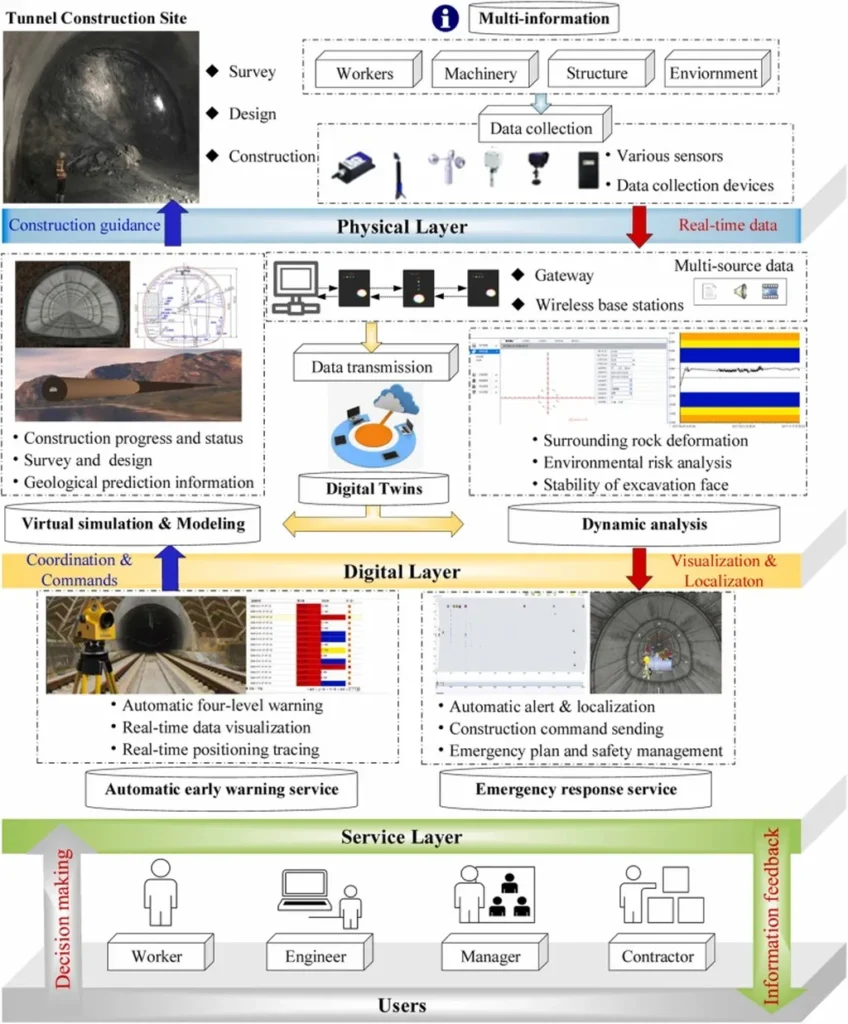In the high-stakes world of tunnel construction, particularly in the energy sector where precision and safety are paramount, a groundbreaking development has emerged from the labs of the Kunming Survey, Design and Research Institute Co., Ltd. of CREEC. Led by Yongfa Guo, a team of researchers has introduced a novel framework that promises to revolutionize how we identify rock mass structures in tunnel faces, potentially saving time, resources, and lives.
The challenge at hand is daunting: existing image segmentation methods often falter when confronted with fuzzy boundaries, texture interference, and data scarcity—common hurdles in tunnel construction. Enter EAPEM, or the edge-aware-prototype-based efficient MaskFormer. This innovative framework is built upon the MaskFormer architecture but takes it a step further by integrating an efficient multi-scale pixel decoder, a prototype-based masked cross-attention, and an edge-aware module. The result? A tool that can parse global semantics and refine local boundaries of tunnel face structures with unprecedented accuracy.
“Our model achieves a mean pixel accuracy of 84.56% and a mean intersection over union (mIoU) of 75.58% with only a small number of high-quality training images,” Guo explains. These numbers might seem like mere statistics, but they represent a significant leap forward in the field. The model’s performance is particularly impressive in karst cave recognition tasks, where it achieves 93.54% accuracy and over 85% boundary IoU. This is a game-changer for handling complex boundary structures, a common challenge in tunnel construction.
So, what does this mean for the energy sector? Tunnel construction is a critical component of many energy projects, from hydroelectric power plants to underground storage facilities. The ability to rapidly and accurately identify rock mass structures can optimize dynamic excavation strategies and ensure safety decision-making. This can lead to significant cost savings and improved project timelines, not to mention enhanced safety for workers.
The commercial implications are vast. Energy companies can now leverage this technology to minimize risks and maximize efficiency in their tunnel construction projects. The EAPEM framework offers a lightweight, efficient, and edge-aware segmentation solution that can be deployed in complex construction scenarios, making it a valuable tool for any energy sector player involved in tunnel construction.
Published in the journal *Applications in Engineering Science* (translated from Chinese as *应用工程科学*), this research is poised to shape future developments in the field. As the energy sector continues to evolve, the need for advanced technologies that can handle complex and challenging environments will only grow. EAPEM is a step in the right direction, offering a glimpse into a future where tunnel construction is safer, more efficient, and more precise.
In the words of Guo, “This is just the beginning. We are excited to see how our framework will be applied in real-world scenarios and the impact it will have on the industry.” With such promising results, the future of tunnel construction in the energy sector looks brighter than ever.

